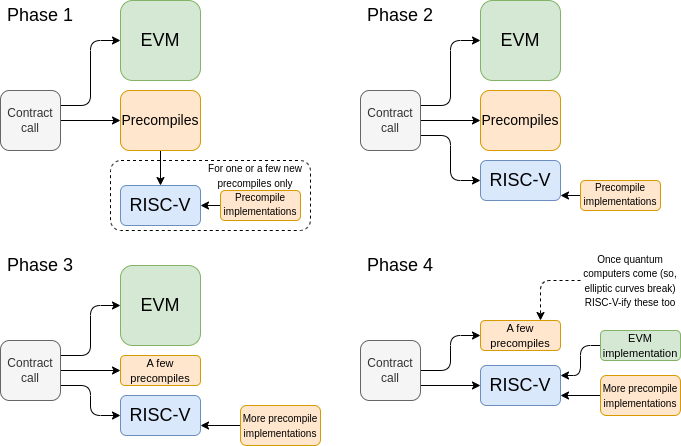Ethereum Foundation researcher Justin Drake has proposed “Lean Ethereum,” a plan to make the layer-1 smart contract network quantum-secure, while also simplifying Ethereum’s tech stack, which includes the consensus layer, data layer and execution layer.
The researcher proposed zero-knowledge powered virtual machines, a way of verifying data onchain without revealing the content of that data, to quantum-proof the execution layer and strengthen security.
Drake called for data availability sampling as a way of reducing the storage requirements for the Ethereum blockchain, while preserving block integrity.
Data availability sampling is a technique that checks small, random pieces of a block to ensure the block is accurate without a node having to download the full block to ascertain whether it is valid.
He also proposed adopting a RISC-V framework, which is a set of simplified computer instructions designed to tell a computer processor what to do. This would make the consensus layer more secure while simplifying the technical components of consensus.
Proponents of the RISC-V framework argue that it boosts security by reducing the possible attack surfaces and backdoors into a network and its constituent nodes.
Developers continue to call for a simpler Ethereum tech stack to promote ease-of-use among blockchain developers, while reducing complexity and limiting backdoors. The smart contract network has faced repeated criticisms from developers for its technical complexity.
Related: Ethereum 2035: How the next 10 years might look
Ethereum co-founder Vitalik Buterin and other developers voice similar concerns
In May, Ethereum co-founder Vitalik Buterin said he wanted to simplify Ethereum’s tech stack over the next five years to make the blockchain network’s architecture as simple as Bitcoin.
Vitalik said that too much technical development on Ethereum “has contributed to much of our excessive development expenditure, all kinds of security risk, and insularity of research and development culture, often in pursuit of benefits that have proven illusory.”

Buterin also proposed the shift to a RISC-V architecture in April to make the network faster and more resilient.
Others, such as XinXin Fan, the head of cryptography at decentralized blockchain platform IoTeX, have proposed hash-based zero-knowledge proofs as a way of quantum-proofing the entire network without sacrificing user experience.
Magazine: Proposed change could save Ethereum from L2 ‘roadmap to hell’














